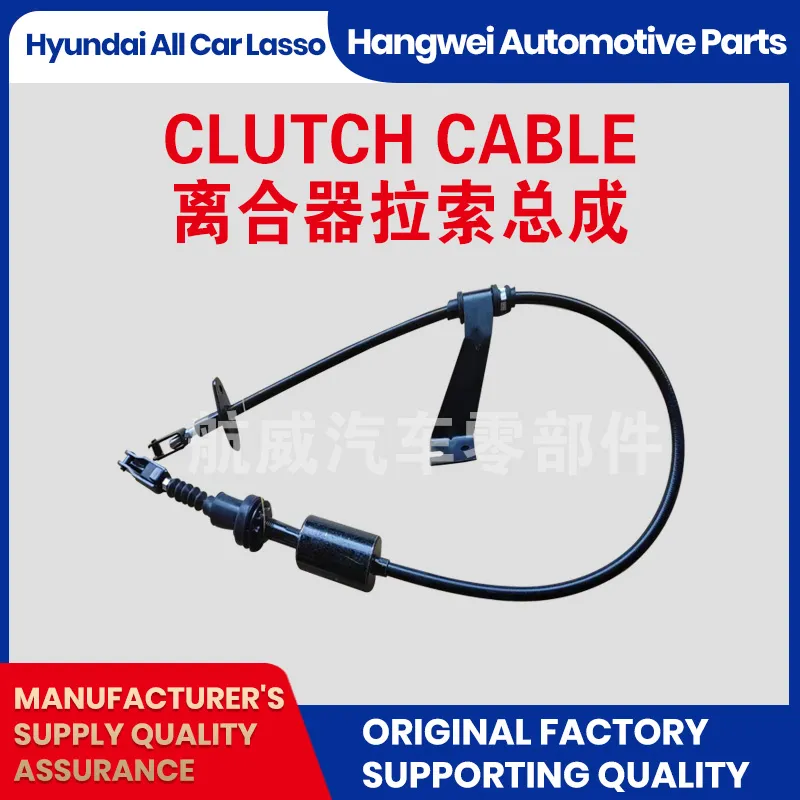Understanding Manual Throttle Cables and Their Importance in Vehicle Performance
Understanding Manual Throttle Cables An Essential Component of Automotive Control
In the world of automotive engineering, many components contribute to vehicle performance, efficiency, and safety. One such component that often goes unnoticed, yet plays a vital role in vehicle control, is the manual throttle cable. This component connects the accelerator pedal to the engine's throttle body, enabling drivers to control the engine's power output effectively. In this article, we will explore the function, structure, and maintenance of manual throttle cables, shedding light on their significance in automotive design.
What is a Manual Throttle Cable?
The manual throttle cable is a mechanical device composed of a flexible cable that transmits the driver's input from the accelerator pedal to the throttle body of an engine. When the accelerator pedal is pressed, the cable pulls on the throttle linkage, opening the throttle plate within the engine. This action allows more air (and fuel, in the case of internal combustion engines) to enter the engine's combustion chambers, increasing the engine's power output and, consequently, the vehicle's speed.
The Structure of a Throttle Cable
A typical manual throttle cable consists of several key components
1. Outer Housing This is the protective casing that surrounds the inner cable and helps shield it from environmental elements, like dirt and moisture. The outer housing is usually made from durable materials that resist wear and degradation.
2. Inner Cable The inner part of the throttle cable is a flexible steel wire that transmits the force applied by the accelerator pedal to the throttle body. The inner cable must be made of high-strength materials to withstand the tension and friction encountered during operation.
3. End Fittings These are the connectors at both ends of the cable. One end attaches to the accelerator pedal, while the other connects to the throttle mechanism. These fittings are designed for easy installation and adjustment, ensuring optimal functionality.
Functionality in Vehicles
The manual throttle cable is particularly prevalent in older vehicles and certain performance-focused cars where driver engagement is prioritized. Unlike electronic throttle control (ETC) systems that utilize sensors and motors to manage throttle position, a manual throttle cable provides a direct, mechanical link between the driver’s foot and the throttle, offering enhanced tactile feedback. Drivers often appreciate the responsiveness of a manual system as it allows for a more intuitive driving experience, particularly in situations requiring precise control, such as off-roading or racing.
Signs of Throttle Cable Issues
manual throttle cable

While manual throttle cables are durable, they can wear over time. Here are some common signs that may indicate a problem
- Sticking Throttle If the throttle doesn’t return to its closed position smoothly, it may be due to cable stiffness or fraying.
- Excessive Play or Slack This can lead to delayed throttle response or erratic acceleration.
- Visible Damage Cracks or frays in the outer housing indicate that the cable is compromised and should be replaced promptly.
Maintenance and Replacement
Regular maintenance of the throttle cable is crucial for optimal vehicle performance. Here are some tips
1. Inspection Periodically check the cable for signs of wear, fraying, or damage. Ensure that the connections at both ends are secure.
2. Lubrication Applying a suitable lubricant can help reduce friction within the cable housing, allowing for smoother operation.
3. Replacement If any damage is evident, or if the cable exhibits excessive wear, it should be replaced. Replacement cables can typically be sourced by make and model, ensuring a proper fit.
Conclusion
The manual throttle cable, though often overlooked, plays a significant role in the functionality and performance of vehicles. Understanding its operation, maintenance, and signs of failure can help drivers ensure that their vehicle remains responsive and safe on the road. Whether in traditional combustion engines or in performance-focused cars, the manual throttle cable remains a symbol of direct, driver-oriented control that many enthusiasts continue to cherish. As with any vehicle component, attention to the throttle cable can lead to a safer, more enjoyable driving experience.
-
Upgrade Your Control with Premium Throttle CablesNewsAug.08,2025
-
Stay in Control with Premium Hand Brake CablesNewsAug.08,2025
-
Experience Unmatched Performance with Our Clutch HosesNewsAug.08,2025
-
Ensure Safety and Reliability with Premium Handbrake CablesNewsAug.08,2025
-
Enhance Your Vehicle with High-Performance Clutch LinesNewsAug.08,2025
-
Elevate Your Ride with Premium Gear CablesNewsAug.08,2025
